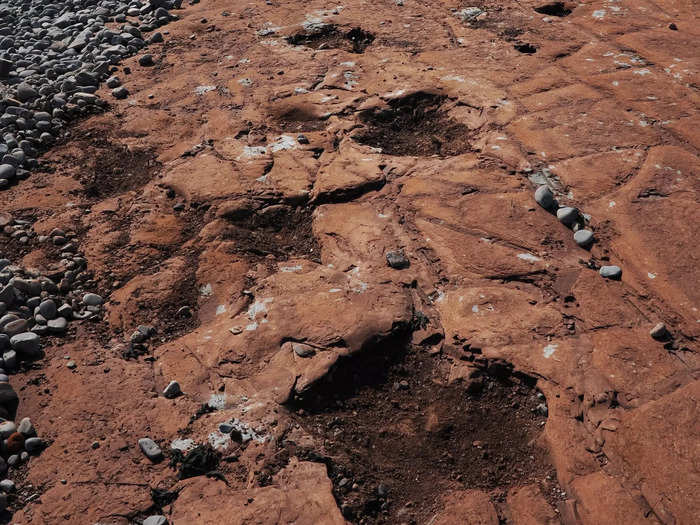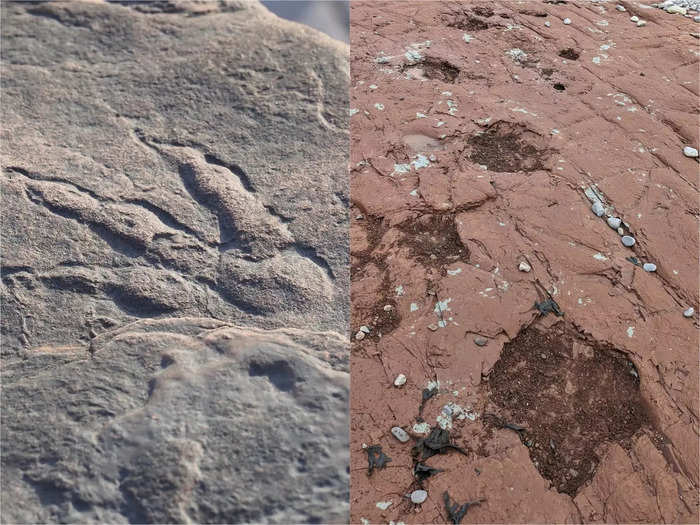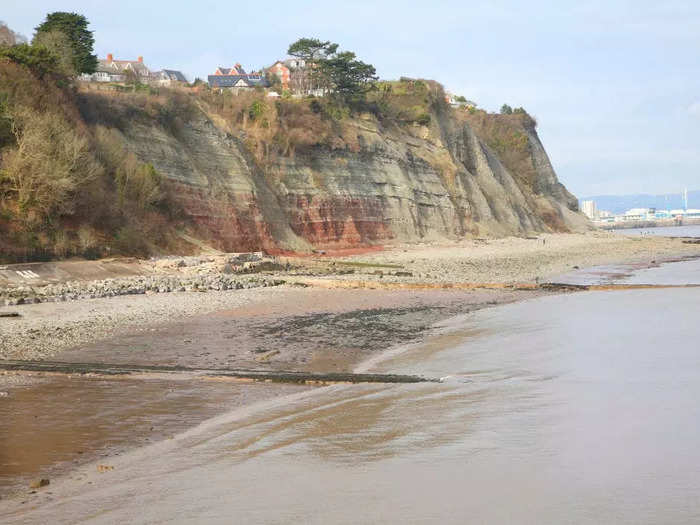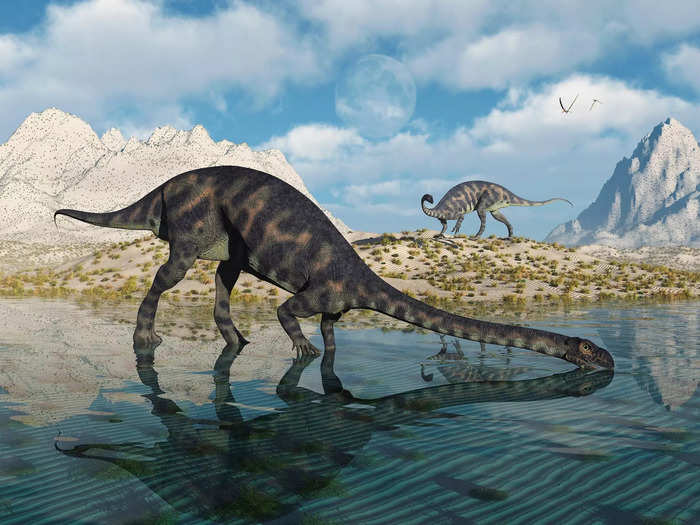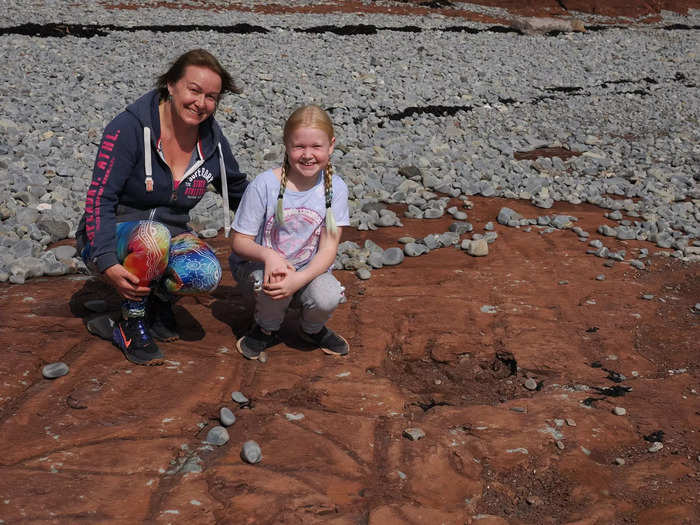Tegan and Claire Jones were looking for fossils on the beach when they found dinosaur footprints.Claire Jones
- A 10-year-old found 220-million-year-old dinosaur tracks in Wales while fossil hunting.
- Tegan Jones and her mother found the tracks, which hadn't been seen in over 140 years.
You've probably left many footprints in mud and sand but the chances they still exist are pretty slim. The same is true for dinosaurs, which is why a 10-year-old's discovery of a set of 220-million-year-old tracks is pretty remarkable.
Tegan Jones was looking for fossils last year with her mother, Claire Jones, when she spotted the tracks.
Others have found dinosaur footprints in this area of Wales. So, the mother-daughter duo thought the tracks were already well-known when they stumbled upon them.
It wasn't until they got home and compared their photos to others' online that they realized the tracks were different.
"It was amazing to think that we had discovered something from 220 million years ago," Claire Jones told Business Insider via email.
The Joneses thought they were looking at an already discovered set of prints.
This area of Wales has other dinosaur fossils, including footprints. Cindy Howells
The Joneses live about an hour from the beach near Penarth in South Wales, which is known for being rich in fossils from the Jurassic period, around 200 to 145 million years ago.
They knew a set of dinosaur prints had previously been found nearby, so the pair decided to look for them. That's when they discovered the new tracks.
Online pictures of previously found dino tracks were in grayish rocks. But the Joneses' photos of the new-found tracks were in red rocks. That's when they realized they might have found something new.
A Camelotia dinosaur may have left the footprints.
The footprint found by a four-year-old in 2021 (left) and those found by Tegan Jones last year (right). National Museum Of Wales/Cover I via Reuters Connect ; Claire Jones
Claire emailed the National Museum Wales. Later, Cindy Howells, the museum's curator of paleontology, joined the Joneses at the site to confirm their find and determine what type of dinosaur the prints belonged to.
While it's difficult to be sure, Howells thinks a Camelotia dinosaur may have left the prints. Bones belonging to these long-necked herbivores from around the same time period have turned up in southwest England, and Howells suspects the species lived in this region, too.
Moreover, the prints are spaced apart by about 30 inches, which would have required a fairly large stride, and Camelotia could reach nearly 10 feet tall and 20 feet long.
That said, many dinosaur tracks have the same size and shape. "Unless you find actual fossil bones at the end of a trackway you can never be sure" which dinosaur made them, Howells said.
Wales has a long history of people finding dinosaur tracks.
The dinosaur footprints were first seen in the late 19th century. Geography Photos/Getty Images
The Joneses are the first to see these prints in over 140 years, Howells said.
Geologists in the late 19th century published a paper on a series of tracks in a similar location, which Howells suspects was the same set that the Joneses came upon.
"No one has seen them since," Howells said via email.
It took certain conditions for dinosaurs to leave fossilized footprints.
Camelotia likely looked similar to Massospondylus, pictured here. Mark Stevenson/Getty Images
"These footprints are actually quite rare," Howells said. Dinosaurs made lots of footprints but only some are still recognizable.
The footprints needed to be made in damp mud then dried and baked in the sun before being covered again, she said.
If the mud is too wet or dry, or too deep, the resulting footprints might not be clear enough to identify. Other tracks were obliterated soon after they were created.
Tegan's find has attracted a lot of attention.
Tegan and Claire Jones couldn't believe they found dinosaur footprints. Cindy Howells
It wasn't just Howells who was excited by Tegan's rediscovery of the prints. An episode of the BBC show "Our Lives" featured the family and their discovery.
"It has been very surreal, amazing, and unbelievable," Claire Jones said about the whole experience.
Howells said she and her colleagues will potentially write a paper on the finding to document the prints' existence.

